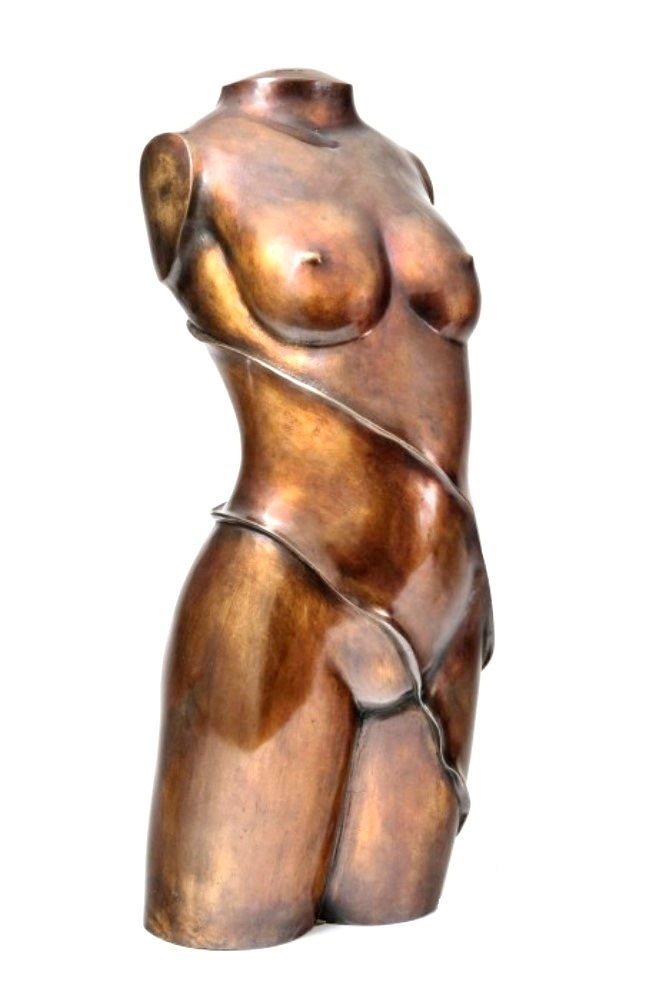Bronze sculpture with brown patina by Emiel De Block – Torso of a woman
Original sculpture by Emiel De Block – Torso of a woman
Lost wax bronze with brown patina signed and numbered bears also foundry stamp. One of an edition of 8 signed and numbered sculptures.
Foundry: De Groeve, Merelbeke, Belgium
Dimensions: 75 x 32 x 30 cm – 29.5 x 12.6 x 11.8 in.
Price: *$ CAD (Canadian dollars) – For more information on artists , artworks or other details contact gallery
Clic here to see more Sculptures or Assemblages>>
Emiel DE BLOCK (1941)
Emiel De Block was born in Berlare on February 17, 1941. He is a Belgian sculptor with both figurative and abstract work.
He obtained his diploma in sculpture at the Academi in Ghent in 1971. In 1975 he again obtained the government medal, this time for sculpture, while in 1965 he won the government medal and prize for modeling.
In 1977 he received a grant from the Ministry of Culture and in 1978 he became a laureate of the Cultural Prize S. De Lathauwer sculpting. The following year he won second prize in Tribute to Jacob Jordaens competition, Antwerp, and in the Belgica 150 sculpture competition. He was also selected for the 15th International Exhibition of Sculpture Fondazione Pagani, Legnano, Milan. That same year he won the National Sculpture Competition August Vermeylen in Ostend.
Works by the sculptor were purchased by both the Ministry of the Flemish Community and the province of East Flanders. Works by De Block can also be found in art collections at home and abroad.
In Emiel De Block’s world of nature images, the female figure predominates. This sculptor wants to recreate the feminine forms through a subtle abstraction into forms of beauty.
The special thing about this is that he abstracts without falling into abstraction, unless exceptional, which he then experiences as a fascinating game. He frees the forms from their existential appearance to recreate them into a completely new existence, reducing nature to purely sculptural values. Often the images radiate an intimate sensitivity, not to say tenderness. It is also typical that the sculptor experiences the affinity of the various arts very deeply. In music and poetry he discovers similarities with his work. If in his figurative works sculpture has become a music that has become silence and music a sculpture that has become melodious, then in his more abstract works it is the affinity with poetry that comes to the fore. The latter is especially apparent in the mostly columnar works that were made for the exhibition “Language of Stone, Silence of Paper” where the images are related to the content of the poems and which were materially connected to the sculptures, as the poet engraved his work in plastic form.
Sources: Archives Ysebaert Louisseize Arts – #curators – and Wikipedia
Date:
July 4, 2021
See more artworks and bio of
Sculptures